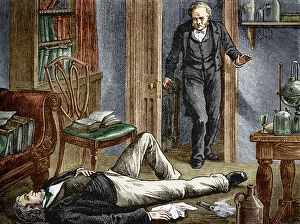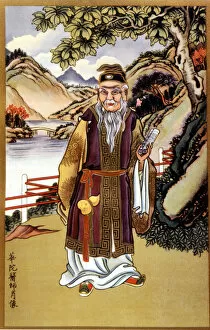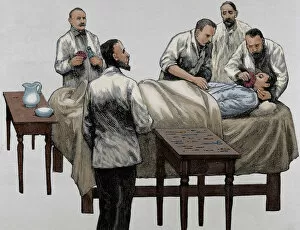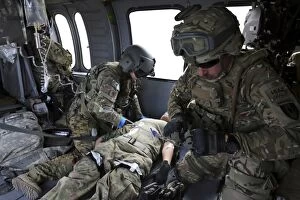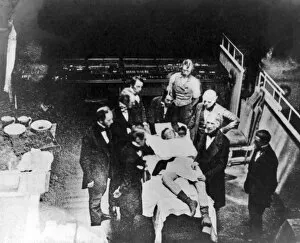Anesthetist Collection
In the 1840s, Dr. Simpson embarked on a groundbreaking journey to revolutionize medicine by researching anaesthetics
For sale as Licensed Images
Choose your image, Select your licence and Download the media
In the 1840s, Dr. Simpson embarked on a groundbreaking journey to revolutionize medicine by researching anaesthetics. His dedication and perseverance led to the discovery of chloroform anesthesia, forever changing the history of medicine. Through an enchanting engraving from the 19th century, we catch a glimpse of this pivotal moment in medical advancement. The image depicts Hua Tuo, a legendary figure in Chinese medicine known for his innovative techniques. This captivating color lithograph showcases his contributions to chloroform anesthesia. Fast forward to modern times, where U. S. Army flight medics showcase their expertise by aiding simulated casualties aboard a UH-60 Black Hawk helicopter. Their skills as they are put to the test as they administer necessary care and relief during critical situations. A re-enactment takes us back to 1850 when the first-ever anesthesia was administered successfully. This historical event marked a turning point in surgical procedures and patient comfort. Artwork depicting various nerve blocks further emphasizes the intricate knowledge possessed by anesthetists today. From ulnar nerve wrist block to median nerve wrist block, these skilled professionals possess expertise in administering pain relief through precise techniques. The supraorbital nerve block artwork showcases yet another facet of their proficiency - providing relief around sensitive areas such as the forehead and eye region. Similarly, infraorbital nerve block and anterior superior alveolar nerve block demonstrate their ability to target specific regions with precision. Lastly, we witness their mastery over radial nerve wrist blocks – yet another testament to their comprehensive understanding of human anatomy and pain management techniques. Anesthetists play an integral role in ensuring patients' well-being before, during, and after surgery or medical procedures. With roots dating back centuries ago through dedicated researchers like Dr.

